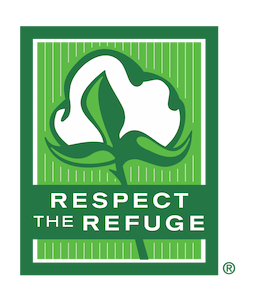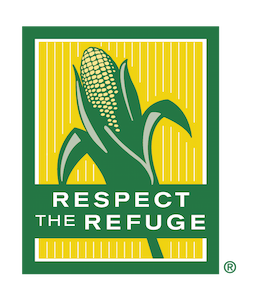5 MIN READ
Understanding Cotton Product Ratings
July 18, 2017
KEY POINTS
- Product ratings help seed companies position their products under the right conditions to meet the grower's needs, field conditions, and management practices for the most successful outcome.
- Categories for product ratings include agronomic and seed characteristics, maturity, fiber quality averages, and stress tolerance.
BACKGROUND
Deltapine® branded cotton products use the same rating scales. The general product characteristic rating scale runs from 1- 1 is excellent, and 9 is poor. Other characteristics have individualized ratings. Product ratings are relative rather than absolute. This means that the ratings are relevant within comparisons of other Deltapine branded products only; comparisons to ratings for competitor’s products could be inaccurate since the rating scale between companies is not calibrated.
Cotton product rating categories include: agronomic and seed characteristics, maturity, fiber quality, disease susceptibility, and tolerance to abiotic stresses.
PLANT CHARACTERISTIC RATINGS
Plant characteristic ratings, including adaptation and agronomic characteristics, are based on internal testing during product advancement, as well as knowledge of the background of related products used during breeding. These ratings provide essential information to growers for on-farm positioning.
Maturity. A relative measure of the time it takes from planting for the cotton product to reach maturity. The second two numbers in the Deltapine upland variety cotton naming system indicate maturity based on the following scale: early (10-19), early-mid (20-29), mid (30-39), mid-full (40-49), and full (50-59). This is an estimate and actual maturity can vary based on environmental conditions and geographic location. Deltapine Pima cotton varieties are described for the relative maturity, but don't use the numbering system described for Deltapine upland varieties.
Dryland and irrigated. General recommendations for placement of cotton varieties on dryland or irrigated acres.
Plant height. Rated as short (S), medium-short (MS), medium-medium short (MMS), medium (M), medium-tall (MT), medium-tall-tall (MTT), and tall (T). This can vary with environmental conditions.
Seed size. A measure of the number of cotton seeds per pound.
Leaf type. Rated as light hairy (LH), semi smooth (SS), smooth (S), and hairy (H). Leaf type can help reduce pest pressure and increase harvest efficiency.
Storm resistance. Storm resistance helps to describe how tight or loose the cotton fibers are in the boll. Rated on a scale of 1-9, with 1 having a tight, stripper-like boll, and 9 having a loose boll.
FIBER QUALITY RATINGS
Fiber quality ratings are based on internal testing during product development and include high volume instrument (HVI) testing to determine average fiber quality values for each cotton product. Micronaire is measured by the resistance of airflow through a 2.34 gram fiber sample that is compressed to a specific volume. Cotton fiber length is the average length of the longest 50% of fibers. Strength is measured by breaking the fibers held between clamp jaws. Strength is measured as grams per tex, which is the force required to break a bundle of fibers one tex unit in size. A tex unit is equal to the weight in grams of 1000 meters of fiber.1
Lint (%). This is the average percentage of lint taken from the total weight of seed cotton.
Staple (32nds). This is the average length of the cotton fibers, and is measured in 32nds of an inch. To help maximize fiber length, proper management and ideal growing conditions are necessary during fiber elongation.
Micronaire.This is an indication of average cotton fineness and maturity. Environmental conditions can be a strong factor in determining micronaire.
Strength (g/tex). This value is an indication of the average strength of the cotton fibers: 31 or higher (very strong), 29-30 (strong), 26-28 (average), 24-25 (intermediate), 23 and below (weak).
Length uniformity (%). This measures the evenness and strength of the cotton fibers as a percentage. It is the ratio between the average length and the average length of the longest 50% of the fibers. In general, values above 85 (very high), 83-85 (high), 80-82 (intermediate), 77-79 (low), and below 77 (very low).
DISEASE RATINGS
Disease ratings are more difficult to generate because it is difficult to simulate a disease with consistent presence and severity across multiple locations for comparable evaluations. Plant breeders artificially inoculate products with disease pathogens for evaluation. However, if conditions are not favorable for disease development in a given year, the incidence of disease may not be adequate for evaluation. Therefore, ratings for specific diseases are not always available for all products.
The product’s level of resistance to diseases of concern is rated, where possible, on a 1-9 scale, with 1 having excellent resistance, and 9 having poor resistance. In cotton, Fusarium wilt, Verticillium wilt, and bacterial blight are rated. Bacterial blight is rated by noting either resistance or susceptibility to the disease.
PLANT DESCRIPTION RATINGS
Nodes of First Fruiting Branch (NFFB). This value indicates the average number of nodes on the mainstem until the first fruiting branch develops.
Number of Fruiting Nodes. This is an average number of fruiting nodes per plant. This number can vary between growing environments and management.
Deltapine® agronomists provide cotton product recommendations based on local conditions. To find the best product for your field, go to our seed finder tool to compare up to five products and add your choices to your seed list for easy reference. Local seed guides may provide additional information for your area.
Sources:
1Classification of Upland cotton. Cotton Incorporated. http://www.cottoninc.com/.
Web source verified 09/10/18. 170619133203






